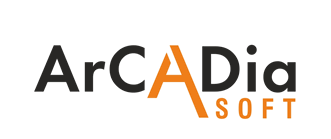What Is 3d Modeling Software?
A potent computer application called 3D modeling software is made to produce and work with digital representations of three-dimensional objects. This kind of software, which enables users to create and see lifelike 3D models, is frequently utilized in a variety of fields, including engineering, architecture, animation, and game creation. The ability of 3D modeling software to replicate real-world things in a virtual setting is one of its primary characteristics.
This makes it possible for engineers, designers, and artists to produce precise and in-depth models that have a variety of applications. Additionally, some software provides sophisticated lighting, texturing, and sculpting tools, allowing users complete control over the details and look of their models. The adaptability of 3D modeling software is an additional advantage. Users can work together, share models, and incorporate their ideas into other apps with ease thanks to the ability to import and export numerous file formats.
Furthermore, some software has simulation features that let users check their designs for problems and functionality. It is crucial to take into account the precise features and tools that best suit your demands while searching for 3D modeling software. While some software may offer a greater range of features, others may be better suited for particular industries or project types.
The software's user-friendliness, customer support, and compatibility with your computer system are also crucial factors to take into account. Businesses and individuals can gain a great deal from investing in 3D modeling software in terms of productivity, precision, and creativity. It is a useful tool that helps improve the design process and helps make ideas come to life. With so many options on the market, selecting the best software for your particular requirements requires careful thought and investigation.
What Are the Recent Trends in 3d Modeling Software
As technology continues to progress, 3D modeling software has also been developing quickly. As a result, new trends have emerged in the field to satisfy consumer requests and keep up with evolving industry standards. To make an informed choice, it is essential to be aware of these trends if you are looking to purchase 3D modeling software.
Buyers of 3D modeling software should be aware of the following current trends:
1. Cloud-based solutions: An increasing number of 3D modeling programs now provide cloud-based solutions due to the growing popularity of cloud computing. Users can now access their project files and software from any location with an internet connection. For teams working on 3D projects, cloud-based solutions can provide greater flexibility and communication choices.
2. Real-time rendering: In the 3D modeling sector, real-time rendering has revolutionized the field. This technology makes the design process more interactive and efficient by enabling users to watch a real-time preview of their work. Users can save time and effort by making changes to their designs and seeing the results instantaneously, thanks to real-time rendering.
3. AI Integration: The capabilities of 3D modeling software have been improved by the incorporation of artificial intelligence (AI). These days, AI algorithms can be used to generate designs, automate monotonous operations, and increase productivity. Because of this, 3D modeling software is now easier to use and more effective at creating designs of superior quality.
4. Virtual reality (VR) and augmented reality (AR) integration: 3D modeling software has also integrated these technologies. This makes it simpler to find and correct any errors before completing the design by enabling users to view their creations in a lifelike 3D environment. Additionally, it facilitates more dynamic and captivating design presentations to clients.
5. Mobile compatibility: Users may now work on their designs while on the go thanks to the availability of mobile versions and compatibility with mobile devices in many 3D modeling software packages. Because of the enhanced accessibility and flexibility, users may now work on their projects at any time and from any location.
Benefits of Using 3d Modeling Software
In a variety of fields, including architecture, engineering, animation, gaming, and product design, 3D modeling software has emerged as a crucial tool for both professionals and enthusiasts. Users can use it to make accurate and lifelike 3D representations of characters, buildings, objects, and more.
We shall examine the many advantages of utilizing 3D modeling software in this buyer's guide.
1. Accurate and Detailed Designs: The capacity of 3D modeling software to produce precise and intricate designs is one of its main benefits. Users can produce 3D models with exact measurements, angles, and proportions with the aid of sophisticated tools and features. In domains like architecture and product design, where minor variations can have major repercussions, this degree of precision is essential.
2. Saves Time and Money: 3D modeling software enables users to produce designs more rapidly and effectively than with traditional hand-drawn designs. Users can save time and effort by simply replicating portions of a design with capabilities like cloning and symmetry. Because less resources are required to generate designs, this also results in cost reductions for enterprises.
3. Visualization and Realism: Users may view their designs in a realistic and immersive way thanks to the potent visualization tool provided by 3D modeling software. For architects and product designers in particular, this is helpful since it allows them to see how their concepts will appear and work in the real world.
4. Simple Collaboration: In the modern, international world, cooperation is crucial to any project's success. By enabling numerous users to work on the same design at once, 3D modeling software facilitates easy and convenient collaboration. Teams find it simpler to exchange ideas, make adjustments, and finish tasks quickly as a result.
5. Versatility and Adaptability: Numerous tools and functionalities are available in modeling software to meet the demands of various sectors. It is a flexible tool for a range of projects because it can be used to build anything from basic forms to intricate structures. Additionally, it gives users the freedom to try out various designs and make adjustments with ease, giving the creative process greater flexibility.
6. Assessing functioning: Testing a design's functionality prior to its physical creation is another advantage of utilizing 3D modeling software. By using simulation tools, users can ascertain how a structure or product will perform in actual situations, revealing any defects or problems that must be fixed before to production.
Important Factors to Consider While Purchasing 3d Modeling Software?
There are a number of crucial aspects to take into account when buying 3D modeling software, which can significantly affect your overall experience and outcomes. To make sure you are purchasing the best software for your purposes, it is imperative that you carefully consider these considerations as a customer. Let's examine the important considerations for 3D modeling software purchases in more detail.
1. Features and Capabilities: The software's features and capabilities are among the most crucial aspects to take into account. Before making a purchase, it is crucial to assess your unique needs because various 3D modeling software offer varying tools and features. Modeling tools, texturing and shading options, animation capabilities, and rendering skills are a few typical elements to search for. List the features you need for your projects and confirm that the software you select has them.
2. Compatibility and Integration: The software's compatibility with your existing system and any additional tools you may be employing should also be taken into account. To prevent any compatibility problems, it is crucial to make sure the software works well with the other apps and devices you use. Additionally, see if the software is compatible with other operating systems, as this may affect accessibility and workflow.
3. User-Friendliness: 3D modeling software, particularly for novices, can be complicated and difficult to use. Thus, before making a purchase, it is crucial to take the software's usability into account. Seek out software with an easy-to-use interface, as well as tools and tutorials to get you started. Long-term, this will save you time and irritation and free up your time to work on your projects.
4. Cost and Value for Money: When purchasing 3D modeling software, cost is an important consideration, just like it is for any major purchase. Even though certain software can be pricey, it's important to consider the software's worth rather than just its initial cost. Examine the features, capabilities, and long-term advantages to see if the cost is reasonable. Before making a purchase, it's also a good idea to see if the software comes with a money-back guarantee or a free trial.
5. Support and Updates: Finally, find out how often the software releases updates and how well-informed the customer service is. If you run into problems or have queries while using the software, a dependable and helpful customer service team can be a great help. Regular updates can also offer new features and capabilities to improve your projects and keep the software operating effectively.
What Are the Key Features to Look for in 3d Modeling Software?
There are a number of important factors to take into account while selecting the best 3D modeling program. These capabilities can help you produce high-quality 3D designs and significantly improve your modeling experience overall. Having a comprehensive knowledge of these qualities and their potential benefits is crucial for buyers.
The following are the most important characteristics of 3D modeling software:
1. Versatility and compatibility: These are two of the most crucial qualities to search for in 3D modeling software. From simple 3D modeling to intricate animations and simulations, you want software that can do it all. It should also work with a variety of file types so you can share your designs with clients or import and export them to other programs with ease.
2. Intuitive user interface: A productive and seamless workflow depends on an intuitive user interface. Choose software with an easy-to-use interface that offers readily available tools and functionalities. This will save you time and frustration by making it simpler for you to use and navigate the software.
3. Modeling tools and features: At the core of any 3D program are the modeling tools and features. Look for software that provides a range of tools for making and working with 3D things. Beveling, slicing, sculpting, and extrusion are some crucial tools to search for.
4. Rendering capabilities: The program must have strong rendering capabilities in order to make your 3D drawings come to life. This is the procedure that turns your 3D models into lifelike pictures or films. Choose a program that has high-quality rendering features, such as global lighting and ray tracing.
5. Animation and simulation: Choose software with robust animation and simulation features if you intend to create animated or interactive 3D models. Motion capture, physics simulations, and keyframe animation are a few examples of such functionality.
6. Support and updates: Selecting software with dependable technical support and frequent updates is crucial. This will guarantee that the program stays current with the newest features and patches and that you can get help if you run into any issues.
Why Do Businesses Need 3d Modeling Software?
Today's businesses work in a fast-paced, fiercely competitive atmosphere. There has never been a more pressing necessity to differentiate oneself from the competition and stay abreast of shifting industry trends. In this context, 3D modeling software has become a vital resource for companies in a wide range of sectors. Applications for 3D modeling software are endless and may help organizations in many ways, from product design and advertising to architecture and construction.
The following are some main justifications for why companies use 3D modeling software:
1. Visualize concepts and designs: Producing realistic and intricate visual representations of concepts and designs is one of the main applications of 3D modeling software. This makes it easier for clients or stakeholders to comprehend and envision the finished project or product by enabling businesses to convey their ideas in a much more engaging and concrete way.
2. Improve product development: 3D modeling software can greatly expedite the product development process for companies that deal with tangible goods. Businesses can save time and money by testing and improving their designs before investing in production by producing precise and comprehensive 3D models.
3. Effective communication: In any business, effective communication is essential. Businesses can express intricate concepts and designs more effectively and simply thanks to 3D modeling tools. Better teamwork and decision-making between stakeholders and team members may result from this.
4. Competitive edge: To survive and prosper in the current market, companies must maintain an advantage over their rivals. Businesses can get a competitive edge by producing superior and eye-catching designs with 3D modeling software. This can improve their brand image, draw in new clients, and keep hold of current ones.
5. Cost-effective: Although 3D modeling software may appear like a costly tool at first, it might end up being a cost-effective one over time. Businesses can save production costs and prevent faults or revisions by reducing the need for physical prototypes and facilitating effective communication, which will ultimately increase revenues.
How Much Time Is Required to Implement 3d Modeling Software?
The intricacy of the software, the user's experience with related tools, and the particular requirements of the project will all affect how long it takes to develop 3D modeling software. Learning how to use a 3D modeling program and begin producing simple designs can often take a few days to a few weeks. It is advised that novices begin with easier tasks and work their way up to increasingly intricate designs.
This will enable you to develop your abilities and confidence, in addition to assisting you in becoming acquainted with the software's features and functionalities. You might be able to finish tasks more quickly as you gain expertise. Because they will already have a solid grasp of 3D modeling ideas and may have used similar software before, experts and experienced users will need a lot less time to install.
To fully utilize the new software's capabilities and maybe save time in the long term, it is still crucial to take the time to investigate its features and tools. It is crucial to remember that mastering 3D modeling software is a continual process that may call for constant study and practice. You might be able to finish projects faster and utilize more sophisticated features that can save time and enhance the overall caliber of your designs as you get more practice and a deeper understanding of the program.
What Is the Level of Customization Available in 3d Modeling Software?
The degree of customization offered by 3D modeling software is one of the most important things to take into account. This refers to the software's adaptability to your unique requirements and process, which facilitates the creation and modification of 3D models. Before making a purchase, it's critical to comprehend the possibilities offered, as the degree of customization varies depending on the software.
First off, with sophisticated tools and features, certain 3D modeling software provides a high degree of customisation. You may alter every element of your models with these tools, from sophisticated animation and rigging to texture mapping and lighting. Professional users who require exact control over their models and projects will love this degree of personalization.
However, certain 3D modeling programs might only offer a small number of customization possibilities, which makes them more suited for novices or enthusiasts. This program has an easier-to-use interface and might provide easily customizable pre-made models or templates. Additionally, they might have a flatter learning curve, which would make it simpler for novice users to begin 3D modeling.
The ability to import or create custom scripts and plugins is another aspect of customisation to think about. These can enable more sophisticated modification and improve the software's functionality. A thriving user base for certain 3D modeling programs produces and distributes unique plugins, providing a vast array of capabilities and resources.
Finally, your budget will also determine how much personalization you can afford. Although certain high-end 3D modeling programs can be expensive, they provide a wide range of customization choices. Conversely, less expensive solutions could offer fewer customization choices, but they can still offer most users a good degree of personalization. In conclusion, your needs, financial situation, and the product itself all affect how customizable 3D modeling software is.
Finding the choice that best meets your needs requires investigation and comparison of many options. To guarantee a seamless and effective 3D modeling experience, consider the degree of customisation when choosing.
Which Industries Can Benefit the Most from 3d Modeling Software?
For sectors that mostly rely on design, creativity, and visual representations, 3D modeling software has become a vital tool. The features of 3D modeling software can be extremely advantageous for a variety of industries, including architecture and entertainment. Let's examine which industries stand to gain the most from this technology.
1. The Construction and Architecture Sector: Architecture and construction are arguably two of the most evident sectors that stand to gain from 3D modeling software. With the use of this software, engineers and architects can produce accurate and comprehensive 3D models of their designs, improving their ability to represent and explain their concepts to clients. Additionally, these models save time and money by pointing out possible defects or problems in the design before building starts.
2. The Animation and Film Sector: For decades, the film and animation industries have used 3D modeling software to produce realistic animations and breathtaking visual effects. By creating realistic and intricate 3D models of people, places, and things, this software enables artists to realize their creative visions. The film and animation industries may continue to push the limits of creativity and produce visually breathtaking works thanks to the ongoing improvements in this technology.
3. The Manufacturing and Product Design Sector: The usage of 3D modeling software has completely changed how goods are created, tested, and manufactured in the manufacturing and product design sectors. Designers and engineers may expedite the entire production process, from concept to prototype to final production, by producing realistic and accurate 3D models of products. Better product quality, quicker turnaround times, and cost savings are the outcomes of this.
4. The Gaming Sector: The usage of 3D modeling tools has also been very beneficial to the game business. Game makers may now create more realistic and intricate virtual worlds that are visually attractive and engrossing than ever before because to this technology. Additionally, it makes it possible for characters to move more fluidly and smoothly, which enhances player immersion and engagement.
5. The Training and Education Sector: In recent years, the education and training sector has increasingly used 3D modeling software. Thanks to this technology, professionals and students may now practice and study in a virtual setting, enabling a more engaging and hands-on learning environment. For training and simulation purposes, 3D modeling software is also utilized in the engineering and medical domains.
Conclusion
It is evident from a thorough investigation and comparison of several 3D modeling software solutions with respect to functionality, cost, usability, and user evaluations that there isn't a single, universally applicable answer. Every piece of software has its own advantages and disadvantages, and in the end, it comes down to the requirements and tastes of the user.
Programs like SketchUp or Blender provide user-friendly interfaces, a range of tutorials, and support materials for novices or those seeking a more approachable choice. Professionals and industry specialists, on the other hand, could like more sophisticated software like Maya or 3ds Max, which provide a wealth of tools and features for intricate tasks. Another important factor to take into account when choosing is price.
Although the initial cost of some 3D modeling software may be costly, others provide more reasonably priced subscriptions or even free versions for non-commercial use. To find the most value for your money, it's critical to compare the pricing and the features and benefits. To guarantee a seamless workflow, compatibility with the operating system, file formats, and other software programs on your computer is also crucial.
Additionally, evaluating the software company's degree of customer service and updates may also be a deciding factor. In the end, your unique requirements, financial constraints, and degree of experience will determine which 3D modeling program is best for you. To guarantee compatibility and user happiness, it is advised to test out free trials or demo versions prior to making a final purchase.
Investing in a 3D modeling program can significantly improve your design and visualization skills, making it a useful tool for both personal and professional use, regardless of the software you use.






















